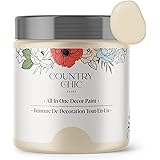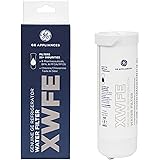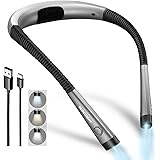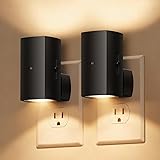Are you looking to elevate your nail art game without breaking the bank on a professional tool kit? It can be surprisingly easy to create stunning nail designs with DIY nail art tools constructed from everyday household items. As demonstrated in the video above, many common objects can be repurposed into highly effective instruments for a range of intricate designs, sometimes even outperforming their professional counterparts.
The beauty of crafting your own tools lies in the accessibility and cost-effectiveness. Whether you are a beginner exploring the world of nail art or an experienced enthusiast seeking clever alternatives, these ingenious hacks are designed to help you achieve salon-quality results from the comfort of your home. A full set of professional-quality DIY nail art tools is within reach, requiring only a keen eye for potential and a little creativity.
Transforming Everyday Items into Essential Dotting Tools
Precision is often considered paramount in nail art, and dotting tools are indispensable for creating a variety of patterns, from simple polka dots to complex mandalas. The versatility of dotting tools is usually dictated by the size of their tip. Fortunately, a range of household items can be skillfully adapted to serve this purpose, offering various dot sizes for all your creative needs.
1. Crafting Fine Dotting Tools
For those delicate, minuscule dots that add intricate detail to your nail art, several items are typically found to be incredibly effective. A professional fine dotting tool is often characterized by its small, rounded metal tip. However, comparable results can be achieved using readily available alternatives.
An ordinary cocktail stick, for example, is frequently observed to produce exceptionally fine dots, offering a sharp point that allows for controlled polish application. Similarly, a very sharp sharpened pencil is another excellent option; its fine lead tip ensures that precise, tiny dots can be made with ease. Lastly, the stem of an earring, particularly those with a thin post, has been successfully utilized for creating remarkably small and uniform dots, providing a sturdy yet delicate applicator.
2. Adapting for Medium Dotting
When slightly larger, more noticeable dots are required, the scope for creative tool adaptation broadens. Medium dotting tools are valuable for adding texture or for forming the basis of larger designs. Common household items can be reimagined to effectively serve this mid-range dotting requirement.
A blunt pencil, with its slightly wider, blunted graphite tip, is often preferred for medium-sized dots. The surface of the nib can be gently rubbed on paper to achieve the desired roundness and flatness. Additionally, an opened-up bobby pin or hair clip presents another versatile option. The rounded ends of the pin, when splayed slightly, can pick up and deposit a perfect medium-sized dot of nail polish. These options provide a comfortable grip and reliable performance, making them excellent choices for any nail art enthusiast.
3. Innovating Large Dotting Solutions
For bolder statements or larger base dots, a large dotting tool is indispensable. While specialized large dotting tools are available, several household items can be improvised to achieve similar, albeit sometimes varying, results. These larger tools are generally employed for creating more prominent features or for efficiently filling in areas.
A flattened nib of a pencil, where the tip has been intentionally pressed or worn down to create a broader, flatter surface, is commonly used for larger dotting. This method allows for a more substantial transfer of polish, resulting in a distinct and round larger dot. However, the use of a Q-tip, or cotton bud, is generally approached with caution for dotting purposes. While the initial dot produced by a Q-tip might be satisfactory, subsequent applications are often observed to yield funny or irregular shapes due to the absorbency and flexibility of the cotton. Therefore, while it can be a quick substitute, it is typically not recommended for consistent large dotting.
Crafting Precision Striping and Detail Brushes at Home
Intricate lines, delicate swirls, and fine details are the hallmarks of advanced nail art designs. Achieving these elements typically requires specialized brushes such as striping brushes and ultra-fine detail brushes. However, with a bit of ingenuity and a steady hand, these essential DIY nail art tools can be fashioned from items already present in your home, offering surprising levels of control and effectiveness.
1. Ingenious Striping Brush Alternatives
Striping brushes are characterized by their long, thin bristles, designed for creating straight lines, stripes, and intricate patterns. The video above showcases several creative methods for making your own nail art tools for striping, with varying degrees of success.
The first method involves repurposing a clean nail polish brush from an old bottle. By meticulously trimming the bristles, starting from the outside and gradually working inwards, a fine striping brush can be created. The key is to trim evenly around the periphery first, then bring the scissor blades down from the top to achieve the desired thinness. While this method can produce a functional brush, its performance has been noted to be less consistent compared to other DIY options.
A second, and surprisingly effective, approach involves using a few nylon bristles from a child’s paintbrush. These bristles are carefully snipped, held together, and then bonded at their base with a little top coat polish. As the top coat dries, the bristles are gently pressed together to ensure they remain united. Once dry, sellotape is wrapped around the base for added stability, and the entire assembly is then secured onto an old pencil with more sellotape. This DIY striping brush is often described as “amazing” in its performance, offering excellent control and precision for drawing lines.
Finally, a dental floss stick can be ingeniously transformed into a striping tool. One side of the floss stick is cut, and the fibers are then pulled out at an angle. This angling of the fibers allows for easier pickup and application of nail polish, making it a surprisingly capable tool for creating stripes. Its performance is often considered “quite a surprise” due to its unexpected efficacy.
2. Developing an Ultra-Fine Detail Brush
For the most intricate details and minute swirls, an ultra-fine detail brush is indispensable. The video highlights a method for creating a DIY nail art tool that reportedly surpasses even professional brushes in performance. This method draws inspiration from the trimmed nail polish brush technique but is applied to a small paintbrush or even a makeup brush.
The process involves trimming the bristles from the outside of a small paintbrush, systematically reducing the number of fibers until only a very small, ultra-fine cluster remains in the center. The goal is to achieve just a few fibers that can hold and transfer polish with extreme precision. This DIY brush has been lauded for its “fantastic” control and ability to work “so much better than my professional brush,” especially when handling finer details where professional brushes might load up too much polish. Its superior performance makes it a highly recommended alternative for complex nail art designs.
Achieving Gradients and Textures with Household Items
Beyond dots and lines, nail art often involves creating smooth color transitions (gradients) or unique textures (like granite or marble). These effects typically rely on specific tools like makeup sponges or stamping tools. However, resourcefulness allows for the creation of stunning results using very simple, everyday materials for these DIY nail art tools.
1. Sponge Alternatives for Seamless Gradients
Gradients, or ombre effects, are popular for their soft, blended appearance. They are usually achieved by dabbing nail polish onto the nail with a makeup sponge. When a dedicated makeup sponge is unavailable, an ordinary washing-up sponge can serve as a viable alternative.
A small rectangle is typically cut from a clean washing-up sponge. When used for gradients, it is noted that this type of sponge tends to soak up a considerable amount of nail polish. While it might not perfectly replicate the pristine finish of a professional makeup sponge, it is widely considered a great alternative when one is not readily at hand. The primary advantage is its accessibility, allowing artists to still achieve a blended look without specialized supplies.
2. Crafting Textured Effects with Cling Film
For those desiring unique granite or marble nail effects, an unconventional but highly effective tool can be found in the kitchen: cling film, also known as shrink wrap. This method provides a fun and easy way to add distinctive textures to manicures.
The process involves scrunching up a piece of cling film into a small ball. This textured ball is then lightly dabbed into nail polish colors and pressed directly onto the nail. By repeatedly dabbing and applying, a varied and organic pattern can be built up, mimicking the appearance of natural stone. This technique offers a straightforward path to creating visually interesting and artistic nail finishes, proving that professional-looking results can indeed be achieved with the simplest of DIY nail art tools.
The Importance of Effective Cleanup Tools
No nail art session is complete without the cleanup phase. Even the most careful application can result in polish straying onto the skin around the nail. Professional cleanup brushes are designed for precision removal, but excellent alternatives exist right in your medicine cabinet or bathroom.
A cotton bud or Q-tip, when dipped in nail polish remover or acetone, is an incredibly effective DIY nail art tool for tidying up edges. The soft cotton tip can be maneuvered around the cuticle and sidewalls of the nail, accurately wiping away any excess polish without disturbing the main design. This simple yet essential tool ensures that your nail art looks clean, crisp, and professionally finished, highlighting the fact that even the most basic items can contribute significantly to a polished result. The ability to make your own nail art tools for every step of the process truly empowers nail enthusiasts.










